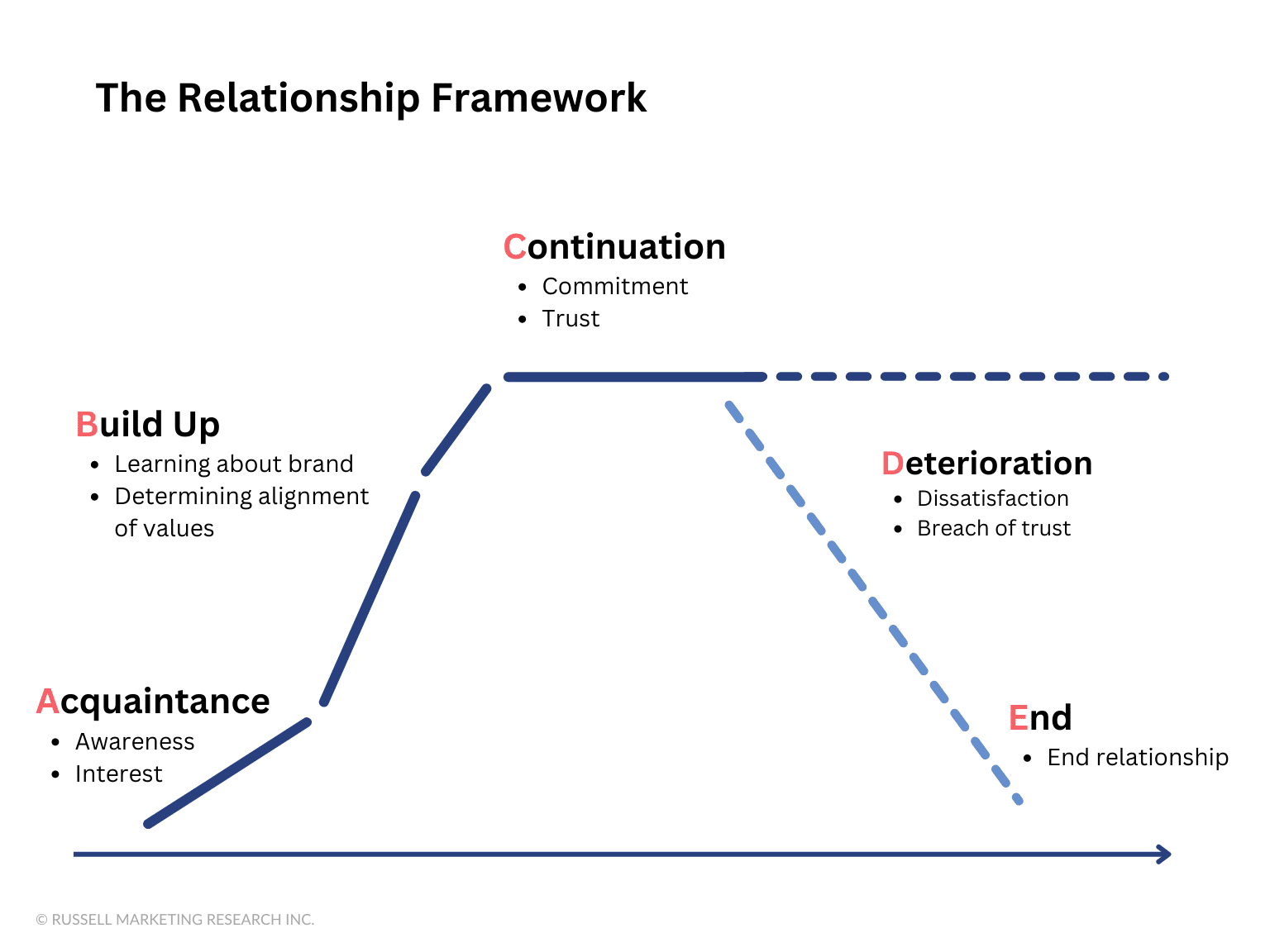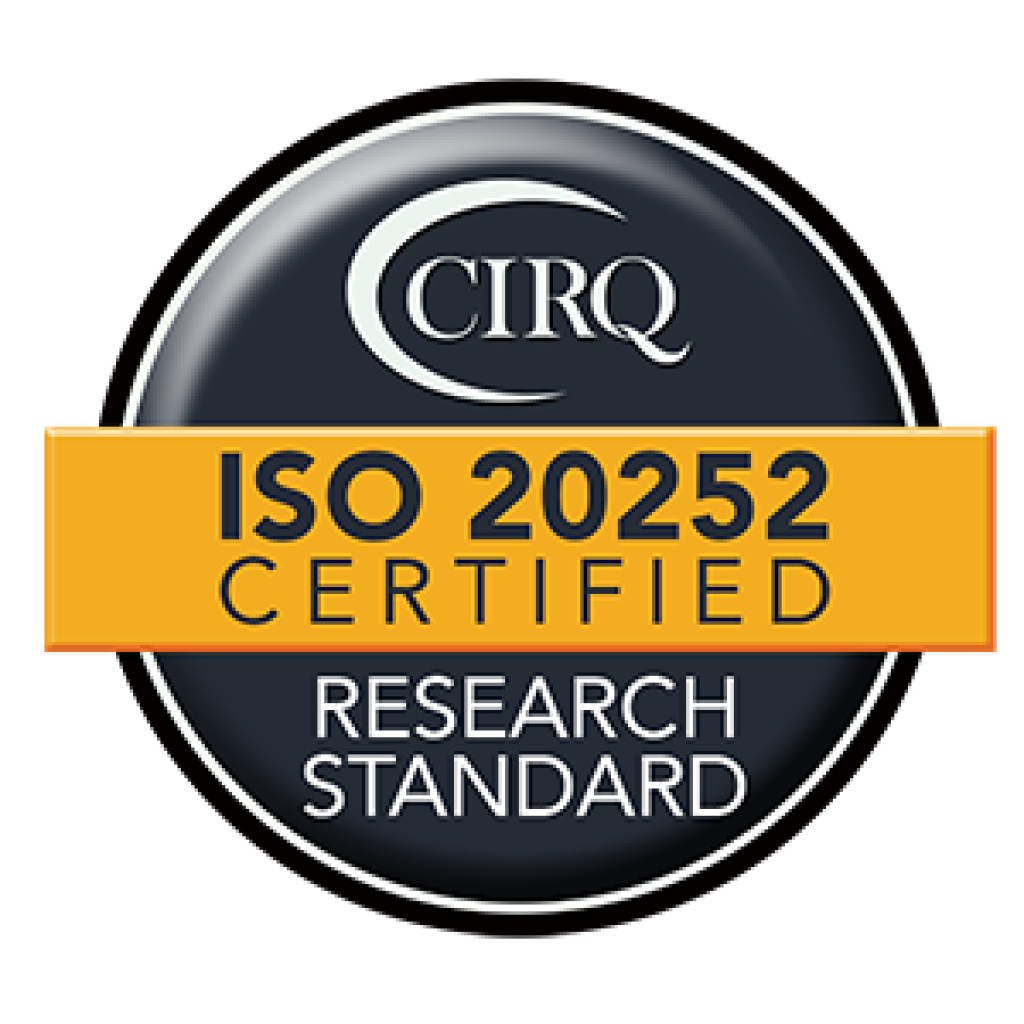Improve Qualitative Insights with the Relationship Stage Framework
This blog post is part of a series where we examine different frameworks used in research. See our prior post about the Habits Framework here.
Influencing consumer behavior is typically required to drive brand growth—whether it’s by inspiring usage of a new category, nudging consumers to switch brands, or encouraging more frequent purchase or usage of a product or service. As marketers, we need to understand consumer behavior.
Qualitative research leveraging psychological frameworks can help make sense of consumer behavior and guide actions that can help marketers achieve our objectives. These frameworks are evidence-based explanations of thoughts, emotions and behaviors. Frameworks clarify the randomness of consumers’ behavior by providing a systematic explanation for what they do. They turn the “surprising facts” in your findings into to more generalizable insights with strong predictive power.
Relationship Stage Theory
Relationship Stage Theory is based on social psychologist George Levinger’s model of human relationships. Often referred to as the ABCDE framework, it provides a helpful analogy for understanding the degree of connection between a consumer and a product or brand.

Using the Relationship Stage Theory as a Brand Strategy Framework
The trajectory of a customer’s relationship with a brand follows the same pattern and cycles through the same stages as interpersonal relationships. Analyzing where a brand stands with customers and understanding what is happening at each stage provides insight into how to create a stronger connection and ultimately, brand loyalty.
Let’s take a closer look at each stage:
Acquaintance is the process of becoming aware of and attracted to a product or brand. A good example of a product with many people currently in the Acquaintance phase is ChatGPT. AI-based text generators burst onto the scene a few months ago and immediately drew a great deal of attention, with a number of new users trying it out (read our recent blog about ChatGPT usage). Based on our research, the buzz in the blogosphere and the ease of trying this product drew many people to want to “meet” ChatGPT—just what a new product or brand needs to attract potential new friends.
Build Up describes the “honeymoon” phase when customers are excited by new and appealing benefits or experiences a brand offers. Just like a new friendship or romance, at this phase intimacy increases, with customers exploring and discovering whether the brand fits with their needs and values. We know some customers who are currently in the Build Up phase with Phillips Hue lights, a brand of smart LED lighting with an extensive product line capable of creating an infinite array of colors for any setting or application. Will initial exploration with these lights lead to a desire to deepen the connection? If so, what’s driving that? These are the questions that a brand needs to ask in market research to ensure customers want an ongoing relationship.
Continuation is a time of increasing dependency that leads to long-term commitment and loyalty. Like marriage or long-term relationships, reliability, trust and homeostasis characterize this phase, with the brand and the customer knowing what to expect. Many brands stumble at this stage and disrupt the status quo by making changes that undo reliability and allow dissatisfaction to creep in. Or they keep things the same for too long and become too comfortable and boring. Apple masterfully manages this phase by consistently offering a frictionless user experience and providing new products that seamlessly integrate with each other so that customers stay within the Apple brand ecosystem. Other companies employ strategies to encourage Continuation, including offering refills (think of Swiffer or room scent diffusers) or loyalty programs (companies in the travel and hospitality industries). Brands need to use market research to think deliberately how to retain trust and encourage customer loyalty. Just like in an interpersonal relationship, it can’t be left to chance.
When the brand enters the Deterioration phase, the customer relationship declines, and dissatisfaction arises. The deterioration may be triggered by a breach of trust or a lack of alignment with customers’ values. Often customers “meet” a new brand that causes them to question the cost/reward equation. Is this brand worth my investment? Is there another brand that might reward me better for the same cost? It is important to note that when a brand is in the Deterioration phase, it can take great effort and expense to recover. Southwest Airlines breached many travelers’ trust with its extensive delays during the 2022 holiday travel season. They are now working hard to gain back that trust with customers. Market research using this framework would be very helpful in understanding what the can do to rebuild trust with their customers.
Finally, there is the Termination phase where the relationship ends, and the customer leaves the brand. Often this plays out as a slow “drip drip” of customers ending their relationships with a brand due to neglect or lack of reason to stay. Other times brands may take dramatic actions that signal new values, and this may cause customers to rethink their relationship with the brand. Twitter has lost more than one million users and fifty out of its top one hundred advertisers since Elon Musk took over. Will this brand recover? It remains to be seen. As with the Deterioration phase, recovery of the lost customers take a long time, effort, and expense. Market research with lost customers will help Twitter understand what if anything could bring them back.
The Value of Relationship Stage Theory
Using the Relationship Theory as a framework to understand customers can help brands take deliberate strategic actions to develop stronger connections with and enduring loyalty from customers. Thinking about the brand-customer relationship as an interpersonal relationship with similar phases provides a very accessible—and fun!—way of developing brand strategy. Be sure to build this thinking into the design of your next round of qualitative research, so that you have the data to take action.
Please click the link below to download our infographic. We hope you find it useful.
Download our infographic – 6 Reasons to Use Frameworks in Qualitative Research







